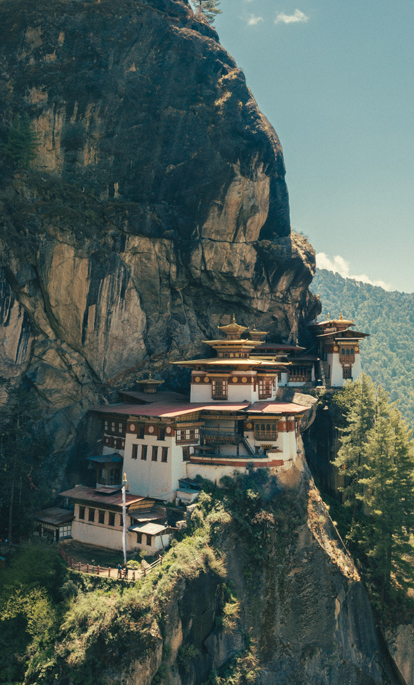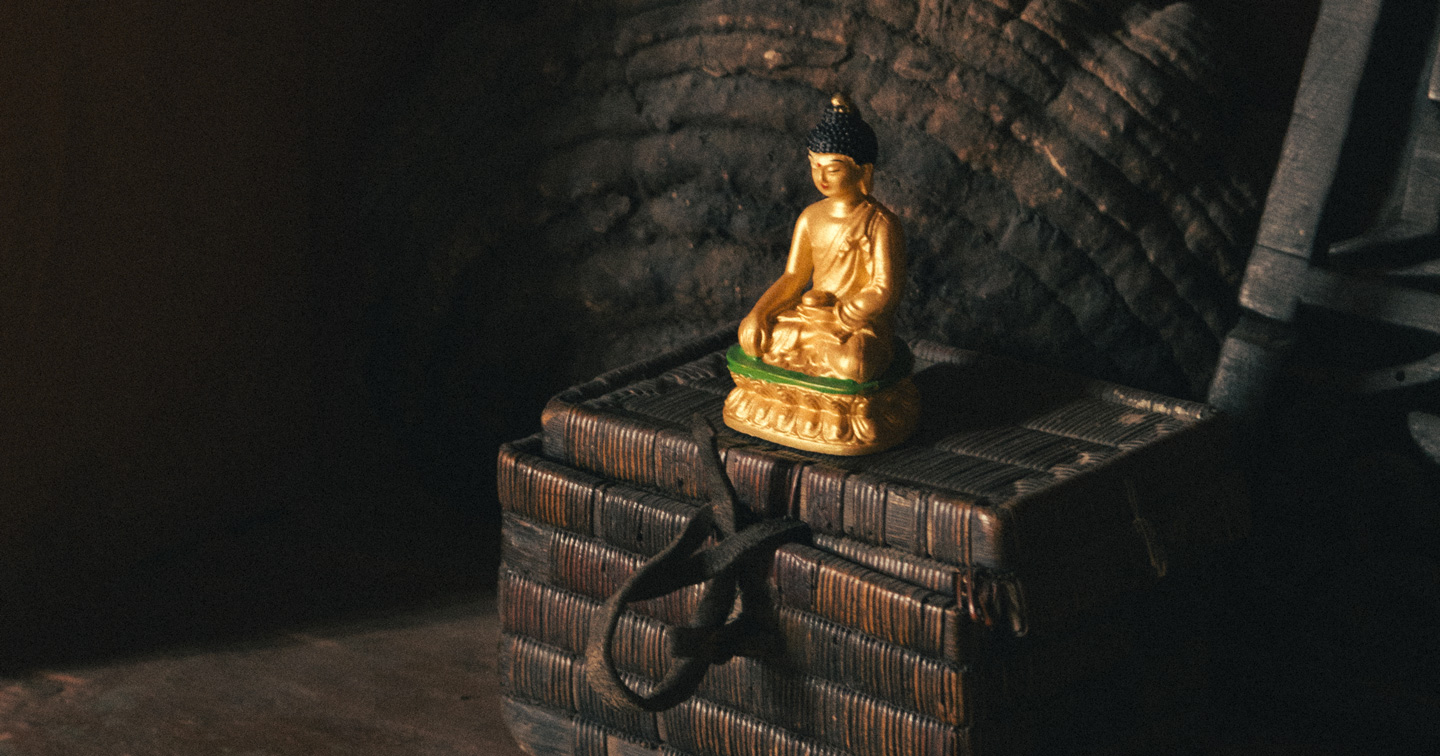
A few suggestions to get the holiday planning process started

Exploring under-the-radar destinations can be difficult, but with the help of our passionate consultants, you’ll discover Bhutan like a local. With recent research trips under our belt, we have up-to-date knowledge of the best properties and experiences, from Punakha’s valleys to Paro’s peaks. Our expert guides and drivers will accompany you throughout your journey, allowing you to explore our personalised picks of hidden villages, mountainside monasteries and ancient wonders at your own pace.
ENQUIRE NOWDiscover different ways to explore Bhutan
Practical advice and inspiration to help you prepare for your holiday
While it is possible, planning an independent trip to Bhutan can be challenging, which is where our consultants’ unparalleled expertise comes into its own. Along with curating itineraries filled with authentic experiences (like watching a traditional game of archery), we’ll set you up with a private driver who’ll work around your flexible daily schedule. We’ll even prep hotels and guides on things like dietary needs, so you won’t go hungry while exploring the Tiger’s Nest Monastery or the Black Mountains.

Bhutan holidays are best for those wanting to escape the modern world, get back-to-nature and discover truly untouched culture. It’s a haven for hikers who are raring to climb dirt tracks and lofty peaks. Your hiking efforts will be rewarded with fascinating Buddhist monasteries and staggering stupas, to discover at the end of your climb . Discover authentic experiences at every turn - butter tea with a Bhutanese family, farmers tending to the lush rice paddy fields and vibrantly masqued dancers at local festivals. Authenticity doesn’t mean you have to compromise on comfort – Bhutan is home to some of the most respected hotel brands in the world, known for designs that fit seamlessly into the surrounding environment. Think: a converted Bhutanese farmhouse set in orange orchards with a royal-vetted chef and spa, or a panoramic lodge complete with Bhutanese hot stone baths and exceptional seasonal produce. What’s not to like?
Travel to Bhutan generally begins and ends at Paro, where the country's only international airport is located. Paro is also the base from which to see probably the highest of Bhutan's many highlights, the fabulous Tiger's Nest monastery. Beyond Paro, and depending on how long you have, we can create an incredible tailor-made Bhutan holiday itinerary to take in such wonders as the Wangdi Valley, famous for its extremely rare black cranes; the wonderful dzongs (fortresses), temples and palaces in Bumthang; and Punakha, the former capital of Bhutan, built at the confluence of the mighty Phochu and Mochu Rivers.
Bhutan is wonderfully unspoilt by the outside world, and the Bhutanese set great store by their traditions and beliefs. Inevitably, however, the modern world is beginning to filter in to this Himalayan kingdom - a ban on TV was lifted in 1999, for example - but it remains a wonderfully unspoilt corner of the world to explore on a tailor made holiday. While Bhutan is slowly changing, the nation's government - recently transformed from an absolute to a constitutional monarchy - does its best to manage the transition. You will find an intact culture and pristine landscapes, that still feel like one of the world’s best kept secrets. Hefty visitor tariffs keep the tourists at bay, leaving Bhutan’s verdant meadows, meandering rivers and crystal-clear lakes in wonderful isolation.
Come spring, the terrain is aflame with thickets of bright rhododendrons, during other seasons, the mountains, clad with blue pine and wildflowers are just as astounding. Witness profound spirituality in Paro’s 17th-century dzongs (fortresses), and in ancient temples in the Bumthang Valley - which is dotted with Buddhist monasteries, prayer wheels and magnificent shrines. Farming is the main livelihood and most farmers still use traditional farming techniques, so you are likely to witness land being ploughed by oxen, locals tending to red rice fields and farmers herding yak. Most of Bhutan's population still wears the traditional national dress of knee or ankle-length robes and aside from farming, many are involved in making traditional handicrafts which can be bought at the markets of the current capital, Thimphu.
In a kingdom where pilgrimages are a way of life, why not embark on a trek immersing yourself in Bhutan’s wilderness and culture. The Tiger’s Nest is a must-see for any visitor, it sits at a giddy height, perched 3,000ft up the face of a cliff, and can only be reached by a three-hour hike – nothing for the crimson-robed monks, who regularly make the hair-raising journey, but you might prefer a horse to help you with the climb. Avid hikers can take their pick of the 30 designated trekking routes, all of which offer exciting wildlife sightings - while there is a slim chance you might catch a glimpse of black bears and red pandas, you'll certainly see some of the 500 species of birds and sightings of yaks are almost guaranteed! If you really want to push yourself, one trail lasts an eye-watering (and foot-blistering) 30 days! Walk the trail and enjoy walk-in tented camps and private chefs to whip up hearty meals at the end of every day
Aside from simple immersion in a thoroughly alien but fascinating culture, trekking is one of the main activities, and keen walkers will be in their element here. Other activities include white-water rafting (from September to May), archery lessons using bamboo bows, and trout fishing in the many mountain streams and rivers, thanks to a British army officer who introduced trout as he missed the fishing of his homeland. Original Travel consultants know Bhutan well and can arrange for participation in archery tournaments, dancing at religious tsechus (festivals), trekking to fantastic monasteries, mountain biking along 12,000ft mountain passes or, between March and May, walks on hillsides ablaze with wildflowers.

Our team of destination experts will get to know you and your unique requirements for your holiday

We work with you to build an ultra-personalised holiday itinerary with your choice of accommodation, experiences and activities

All of our holidays include little extras designed to make a big difference to your trip, from fast-tracking you through airport check-in and security to our network of local Concierges